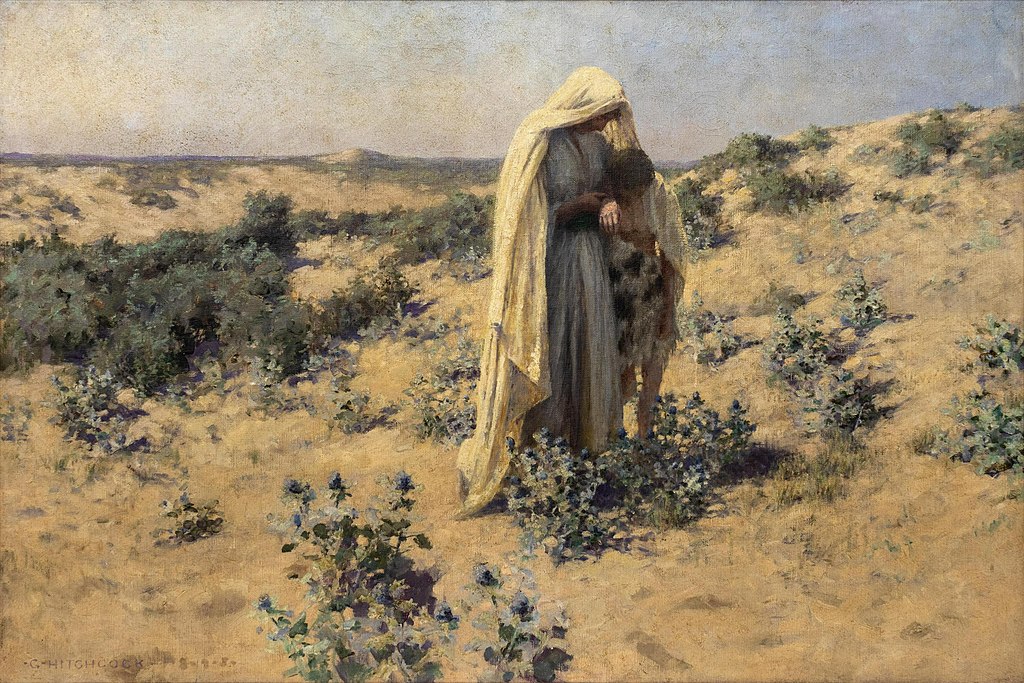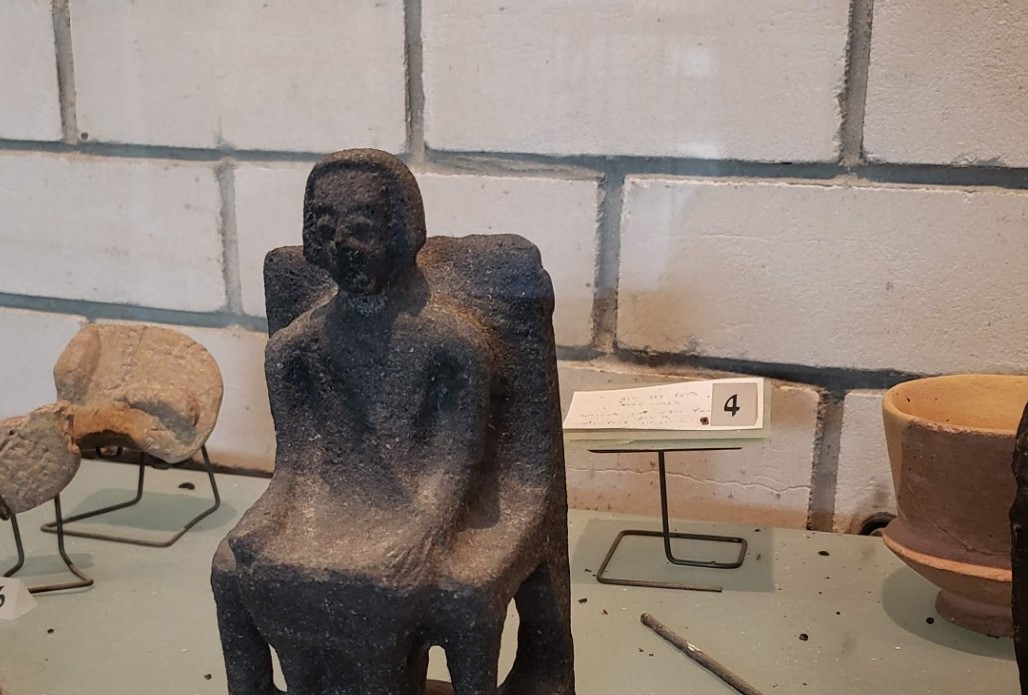Digging Deeper: Who Were Concubines?
Author: Mr. Kenneth Frank | Faculty in Theology, Living Education
Estimated reading time: 7 min., 26 sec.
Did you know that the word concubine as used in the Old Testament does not bear the same connotation as in modern English?
Today it has a rather negative meaning of a mistress or paramour outside of marriage. However, that was not the meaning of this family institution in Old Testament times. This Digging Deeper investigates the times of the patriarchs, judges, and kings of Israel to better understand who concubines were and what their place in the family was.
The meaning of “concubine”
The words concubine or concubines appear 39 times in 37 verses in the King James Bible – all in the Old Testament. Adam Clarke’s Commentary on the Bible explains the derivation of our English word: “We borrow this word from the Latin compound concubina, from con, together, and cubo, to lie, and apply it solely to a woman cohabiting with a man without being legally married” (e-Sword 13.0). However, that is how the word is understood and used now. The first appearance of this English word in our Bible is the mention of Reumah, the concubine of Abraham’s brother, Nahor: “And his concubine, whose name was Reumah, she bare also Tebah, and Gaham, and Thahash, and Maachah” (Genesis 22:24 KJV throughout). Understanding the customs of the times will redirect our understanding of this institution from what seems so strange to our Western minds.
The Hebrew word for concubine is pilegesh (pee-leh’-ghesh). The Cyclopedia of Biblical, Theological and Ecclesiastical Literature by John McClintock and James Strong provides its definition and derivation: “(פִּילֶגֶשׁ, pile’gesh, deriv. uncertain, but apparently connected with the Gr. πάλλαξ [fully in the plur. נָשִׁים פִּילִגְשִׁים, 2 Samuel 15:16; 20:3]; Chald. לְהֵנָה lechenah’, Daniel 5:2-3, 23), denotes in the Bible not a paramour (Gr. παλλακή), but only a female conjugally united to a man in a relation inferior to that of the regular wife (אִשָּׁה)” (e-Sword 13.0). Adam Clarke’s Commentary on the Bible adds: “The Hebrew word is פילגש pilegesh, which is also a compound term, contracted, according to Parkhurst, from פלג palag, to divide or share, and נגש nagash, to approach; because the husband, in the delicate phrase of the Hebrew tongue, approaches the concubine, and shares the bed, etc., of the real wife with her” (Ibid.).
An issue of status
In Western culture, concubine describes a woman who is not a man’s wife but yet lives with him in a sexual relationship. This was not the case in ancient times. A concubine was a culturally lawful wife of lower rank who was not wedded with matrimonial ceremonies and solemnities, being inferior to the first wife who was mistress of the house. John Gill’s Exposition of the Bible explains that she was: “Not an harlot, but a secondary wife, who was under the proper and lawful wife, and a sort of a head servant in the family, and chiefly kept for the procreation of children; which was not thought either unlawful or dishonourable in those times such as was Hagar in Abraham’s family” (e-Sword 13.0). Being servants, concubines had no authority in the family.
Social status was well-defined in ancient times compared to our egalitarian western culture. Dave Miller in his Apologetics Press article Concubines? recently wrote: “In a country where social status and barriers are of minimal concern, it is difficult for us to grasp the magnitude of the chasm that existed between classes in ancient cultures, a chasm that stayed with a person throughout life regardless of advancements along the way.”
What led to the institution of concubinage is explained by Fausset’s Bible Dictionary: “The desire of offspring in the Jew [Israelite] was associated with the hope of the promised Redeemer. This raised concubinage from the character of gross sensuality which ordinarily it represents, especially when a wife was barren. This in some degree palliates, though it does not justify, the concubinage of Nahor, Abraham, and Jacob. The concubine’s children were adopted, as if they were the wife’s own offspring; and the suggestion to the husband often came from the wife herself (Genesis 30). The children were regarded, not as illegitimate, but as a supplementary family to that of the wife.” (e-Sword 13.0). However, The Cambridge Bible for Colleges and Schools’ note on Genesis 22:24 states: “The children of the concubine denote a less intimate tribal relationship than the children of the legal wife” (e-Sword 13.0). These children did not inherit their father’s fortune, though he might provide for them with gifts.
The laws concerning concubines
Polygyny was customary in the east and was tolerated in Old Testament times. The Fausset Bible Dictionary explains: “From the beginning, when man was sinless it was not so; for God made male and female that in marriage ‘they TWAIN should be one flesh’ Matthew 19:4-5, 8)” (e-Sword 13.0). Polygyny was not God’s original intention for humankind. However, the first couple sinned and as Fausset elaborates further: ” … in the course of developing corruption, strayed more and more from the original law, God provisionally sanctioned a code which imposed some checks on the prevalent licentiousness, and exercised His divine prerogative of overruling man’s evil to ultimate good. Such a provisional state was not the best absolutely, but the best under existing circumstances. The enactment was not a license to sin, but a restraint upon existing sin, and a witness against the hardness of man’s heart” (Ibid.).
Smith’s Bible Dictionary comments on who could become a concubine: “A concubine would generally be either
(1) a Hebrew girl bought of her father;
(2) a Gentile captive taken in war;
(3) a foreign slave bought; or
(4) a Canaanitish woman, bond or free.
The rights of the first two were protected by the law, Exodus 21:7; Deuteronomy 21:10-14, but the third was unrecognized and the fourth prohibited. Free Hebrew women also might become concubines” (e-Sword 13.0).
Fausset’s Bible Dictionary notes that concubines were given some protection by law: “The bondmaid or captive was not to be cast away arbitrarily after lust had been gratified (Exodus 21:7-9; Deuteronomy 21:10-11); she was protected by legal restraints whereby she had a kind of secondary marriage relationship to the man. Thus, limits were set within which concubinage was tolerated until ‘the times of this ignorance’ which ‘God winked at’ (Acts 17:30) passed by, and Christ restored the original pure code” (e-Sword 13.0).
In His mercy, God worked with this less-than-ideal situation to mitigate sin. Don Fleming’s Bridgeway Bible Dictionary explains: “Moses introduced laws to protect concubines for much the same reason as he introduced laws to protect slaves. Both slavery and concubinage were wrong, but the practices were so deeply rooted that they could not be removed immediately. However, laws could control them and so start a movement that would lead to their eventual removal (Exodus 21:7-11; Deuteronomy 21:15-17; see also SLAVERY)” (Ibid.).
Not so from the beginning
Solomon had 700 wives and 300 concubines (1 Kings 11:1-3)! The Bridgeway Bible Dictionary explains their relevance in the age of the Israelite kings: “God warned Israelite kings against glorifying themselves through building large harems, but most kings ignored his warnings (Deuteronomy 17:15-17; 2 Samuel 15:16; 1 Kings 11:3; 2 Chronicles 11:21; cf. Esther 2:14). People considered the harem to be such a symbol of kingly power, that a new king established his claim to the throne by claiming the former king’s harem (2 Samuel 3:7-8; 12:7-8; 16:20-22; 1 Kings 2:21-22)” (e-Sword 13.0). The People’s Dictionary of the Bible by Edwin W. Rice details succession: ” …the right over those of one monarch, accrued to his successor; so that to seize on any of them was regarded as an overt act of rebellion. 2 Samuel 3:7; 12:8; 1 Kings 2:22; 1 Kings 11:3″ (Ibid.).
Solomon’s wives, which included his secondary wives (concubines), turned his heart away from God by their importation of paganism when he married them to cement alliances with nearby peoples. The Bridgeway Bible Dictionary describes the resulting family discord: “Yet concubines proved to be a source of trouble to Israel’s kings. The presence of so many wives and children in the palace created family conflicts (2 Samuel 3:2-5; 13:20-22; cf. Genesis 21:8-10; Judges 8:31; 9:2-5), and the idols that foreign concubines brought into the palace led believers away from God (1 Kings 11:4)” (e-Sword 13.0).
Dave Miller in his Apologetics Press article, Concubines?, provides us a fitting summary of concubinage: “Nevertheless, awareness of the biblical meaning assigned to the word ‘concubine’ enables the English reader to understand that Bible characters who possessed concubines were not guilty of taking ‘mistresses,’ but were, in fact, married to them—and not merely engaging in extra-marital intimate relations. In any case, the Bible does not sanction the practice of unmarried sexual partners.”
Since Christ’s first coming, concubinage has become illicit. Easton’s Bible Dictionary affirms: “Christianity has restored the sacred institution of marriage to its original character, and concubinage is ranked with the sins of fornication and adultery (Matthew 19:5-9; 1 Corinthians 7:2)” (e-Sword 13.0). God’s ideal marriage remains one man united to one woman as it was in the beginning (Matthew 19:4-5).

Kenneth Frank was born and raised in New Jersey, USA, and attended Ambassador College, graduating in 1973. He served in the Canadian ministry from 1973-1999, after which he returned to the USA to pastor churches in Maryland, Virginia, and North Carolina for 15 years. Having earned a BA degree from Ambassador College he later earned a MA degree from Grand Canyon University before being assigned to the Charlotte office to teach at Living University, now Living Education. Currently, he teaches the Survey of the Bible course to the on-campus students and writes the Digging Deeper column for our online Bible study program. He is married, has four children, and seven grandchildren.









